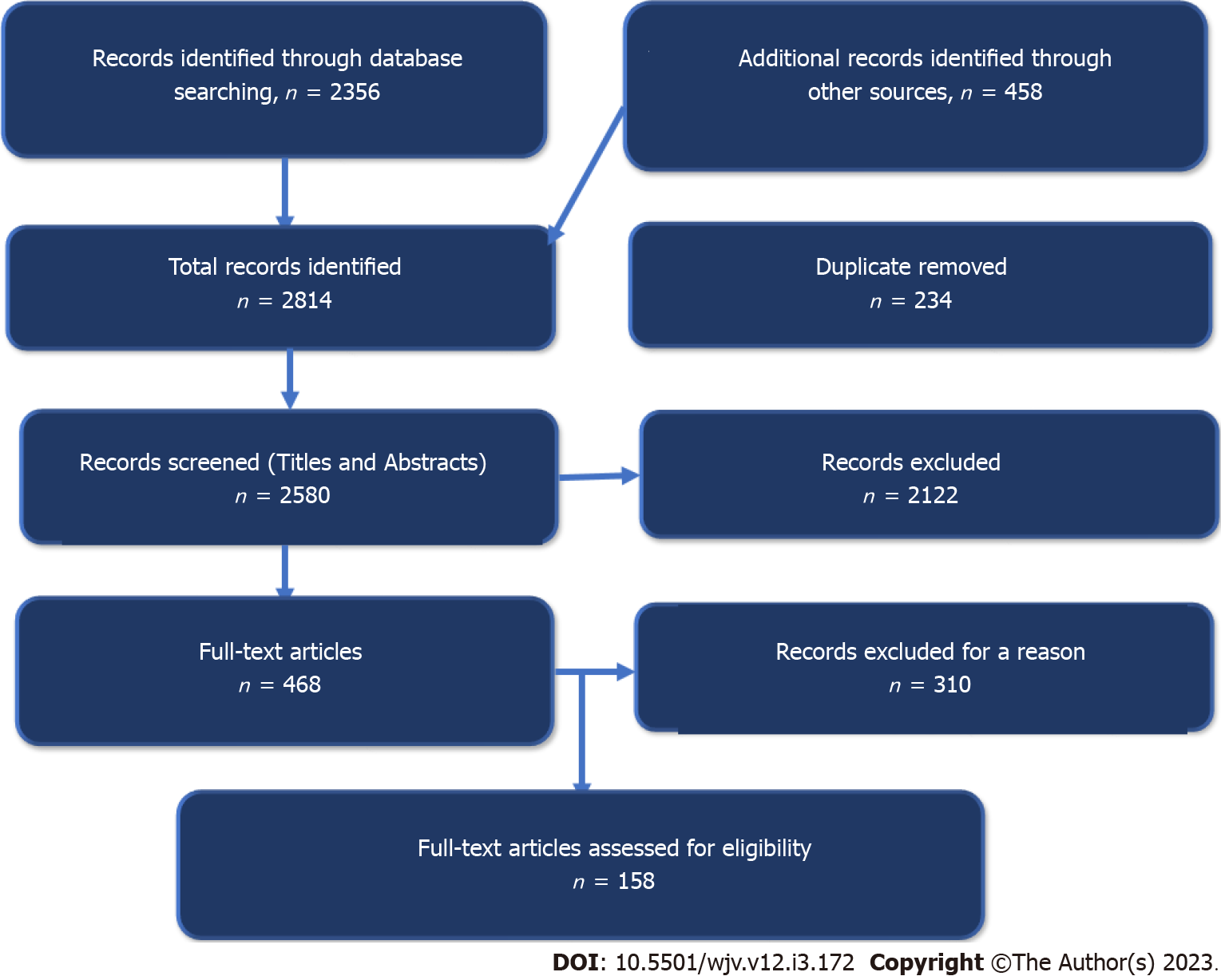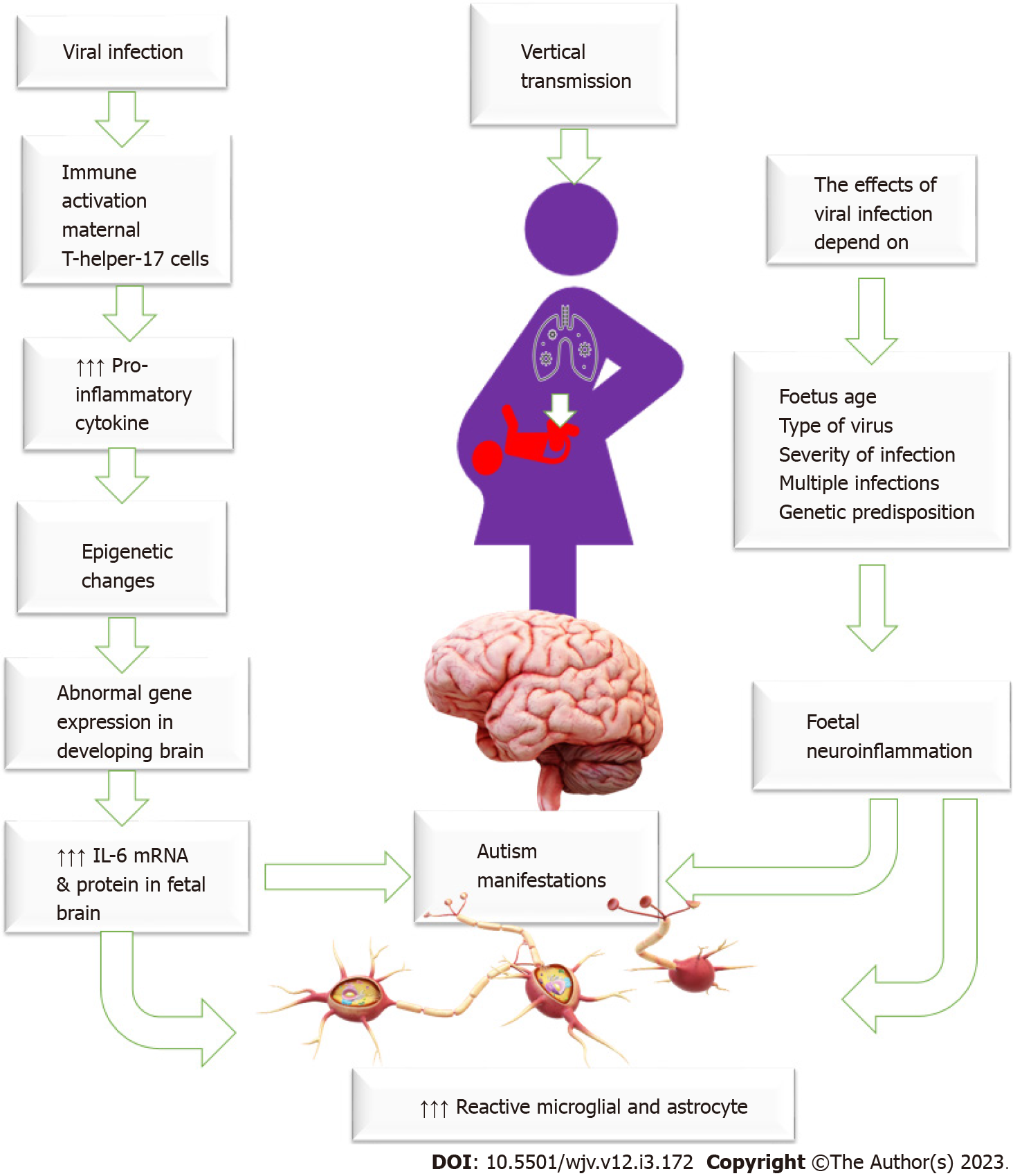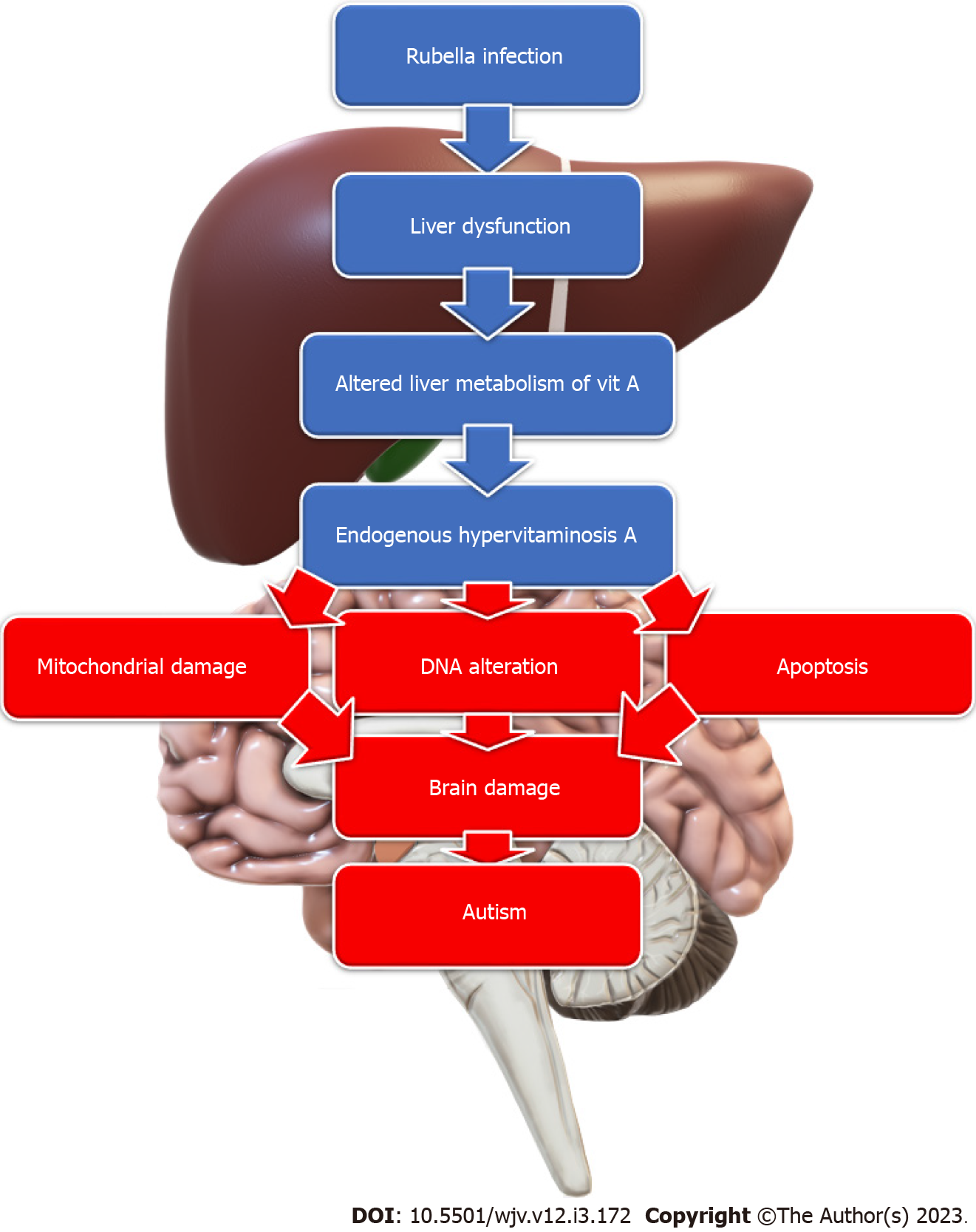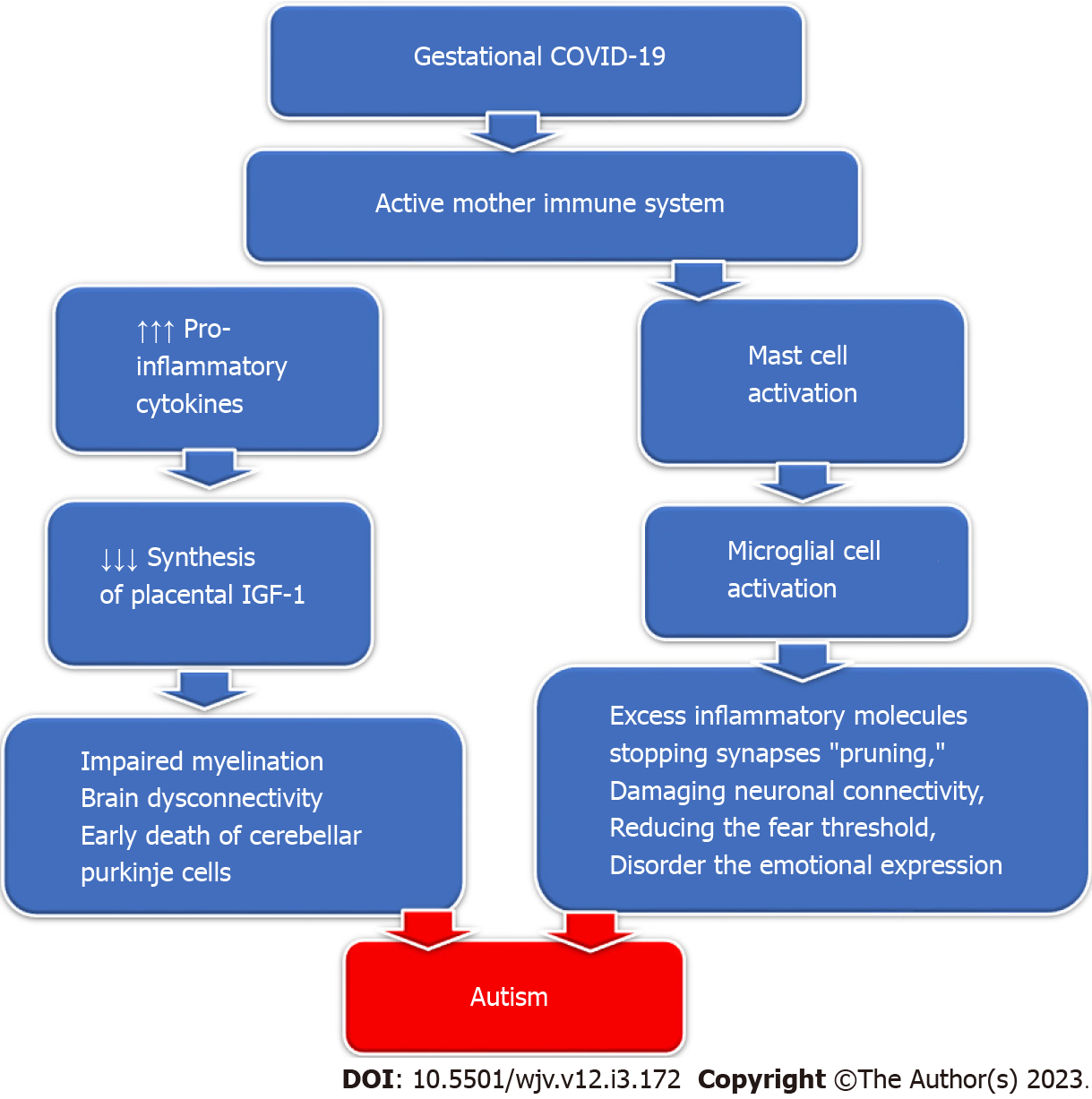Copyright
©The Author(s) 2023.
World J Virol. Jun 25, 2023; 12(3): 172-192
Published online Jun 25, 2023. doi: 10.5501/wjv.v12.i3.172
Published online Jun 25, 2023. doi: 10.5501/wjv.v12.i3.172
Figure 1
Shows the flow chart of the reviewed articles.
Figure 2 General mechanism of viral infection in the induction of autism.
The figure showed that maternal viral infection could reach the virus through vertical transmission and affect the placenta. It also causes maternal immune reactivation with activation of the maternal T-helper -17. This immune hyperactivation leads to a marked increase in the pro-inflammatory cytokines causing epigenetic changes in the fetus, which cause abnormal gene expression in the developing brain with overactivation of astrocytes and glial cells and the development of autistic manifestations.
Figure 3 The effect of antenatal Rubella Infection on the brain.
Rubella virus causes liver dysfunction, which induces altered vitamin A metabolism and endogenous hypervitaminosis A. This hypervitaminosis A causes mitochondrial damage, DNA alteration, and altered apoptosis, resulting in brain damage and autism manifestations.
Figure 4 The effect of gestational severe acute respiratory syndrome coronavirus 2 infection on the offspring brain.
Maternal infection with severe acute respiratory syndrome coronavirus 2 activates the mother's immune system, releasing an excess of pro-inflammatory cytokines that decreases the placental synthesis of IGF-1, resulting in impaired myelination and brain dysconnectivity and early death of cerebellar Purkinje fibres. In addition, maternal immune activation causes mast cell activation, which activates microglial cell activation. Microglial cell activation causes excess inflammatory molecules, stopping synapses "pruning," damaging neuronal connectivity, reducing the fear threshold, and impairing emotional expression ending in the development of autism manifestations. COVID-19: Coronavirus disease 2019.
- Citation: Al-Beltagi M, Saeed NK, Elbeltagi R, Bediwy AS, Aftab SAS, Alhawamdeh R. Viruses and autism: A Bi-mutual cause and effect. World J Virol 2023; 12(3): 172-192
- URL: https://www.wjgnet.com/2220-3249/full/v12/i3/172.htm
- DOI: https://dx.doi.org/10.5501/wjv.v12.i3.172












